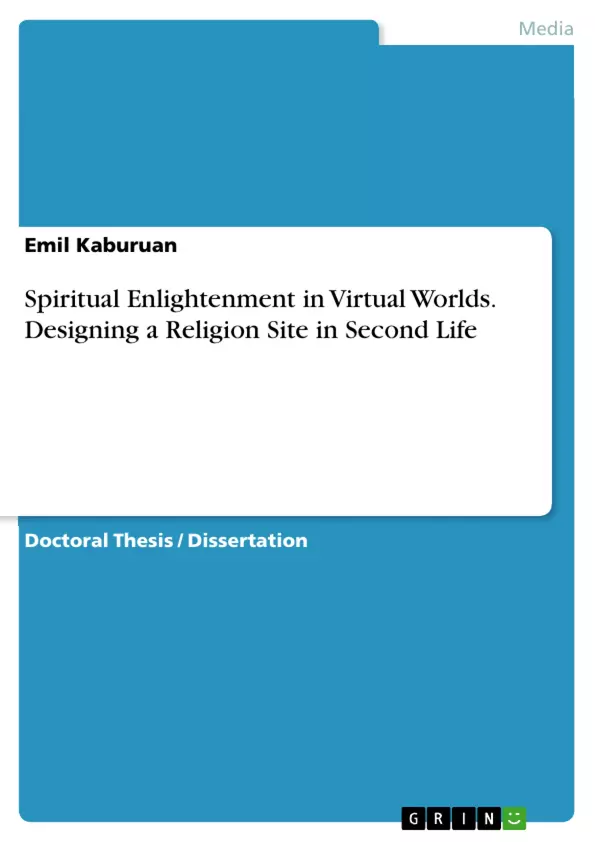The growing of Internet users is amazing. Among these users, there are users who even practice their religion online. A study conducted by Pew Internet & America Life Project found that 64% of the America’s 128 million Internet users have done things online that relate to religious or spiritual matters.
In response to this need, there are some churches and missions’ organization started doing online ministry. In line with this development, there is another medium arise called Virtual Worlds. USATODAY and the Christian Post reported that Leaders of Christian, Jewish and Muslim sites estimate about 1,000 avatars teleport into churches, synagogues or mosques on a regular basis while hundreds more list themselves with Buddhist, Pagan, Wiccan and other groups.
This research is based on Christian Theology with narratology and ludology as video game study’s on designing a religious site in the Second Life®. This study answers questions like; what are the significance features of Second Life for spiritual enlightenment to its users? And what are the design patterns of the “religious site” (the site as mentioned in RQ1)? It uses “research through design” by "Design-Implementation-Evaluation" of a religious site in Second Life. The findings suggest that Second Life and its features could be transformed into “sacred” place and give spiritual enlightenment to its users. The features of Second Life which provide spiritual enlightenment to its users include: Animation, Audio Visual and the Interactive Environment. There are four design principles in resulting of this research including; Storytelling, Mapping, Affectiveness and Virtual Ritual which could be used in designing religious site in Second Life.
Table of Contents
- Acknowledgements
- Abstract
Objectives and Key Themes
This dissertation explores the potential of virtual worlds, specifically Second Life, to facilitate spiritual enlightenment. It investigates the design principles for creating a religious site within this virtual environment, drawing upon Christian Theology, narratology, and ludology. The research seeks to answer questions regarding the significance of Second Life features for spiritual enlightenment and the design patterns of "religious sites" within this platform.
- The role of virtual worlds in spiritual exploration
- Design principles for religious sites in Second Life
- The significance of Second Life features for spiritual enlightenment
- Exploring the potential for "sacred" spaces within virtual environments
- The integration of storytelling, mapping, affectiveness, and virtual rituals in religious site design
Chapter Summaries
The dissertation focuses on the design of a religious site in Second Life, analyzing its potential for spiritual enlightenment. The study examines the specific features of Second Life that contribute to this potential, including animation, audio-visual elements, and interactive environments. These features are then incorporated into a set of design principles, namely Storytelling, Mapping, Affectiveness, and Virtual Ritual, which guide the development of religious sites within the virtual world.
Keywords
This dissertation explores the intersection of religion, virtual worlds, and game design. Key terms and concepts include Ludology, Narratology, Religion, Second Life, Virtual Worlds, and the design of "religious sites" within virtual environments. The research focuses on the potential for spiritual enlightenment through the use of these virtual spaces and their unique features.
- Quote paper
- Emil Kaburuan (Author), 2012, Spiritual Enlightenment in Virtual Worlds. Designing a Religion Site in Second Life, Munich, GRIN Verlag, https://www.grin.com/document/282313



